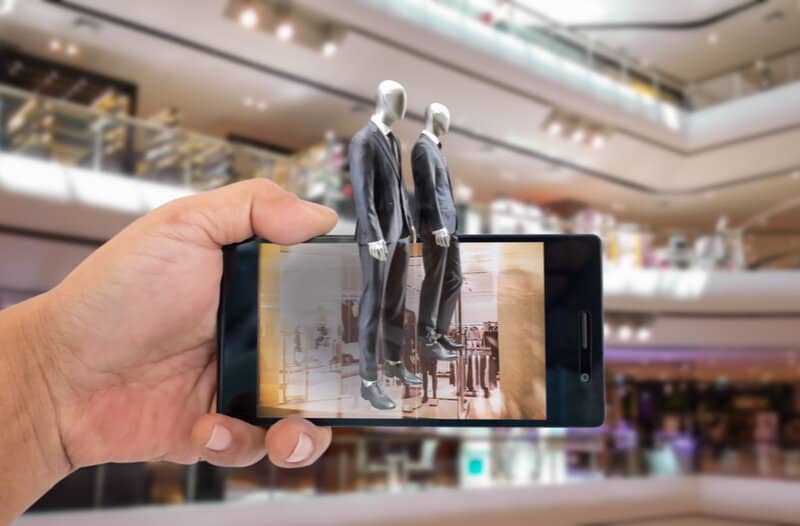- The rise of virtual influencers
- The numbers don’t lie: people love virtual influencers
- Why should you go virtual?
- A new breed of influencers
- Kami, the first virtual influencer with Down syndrome
- The drawbacks of virtual influencers
When it comes to social media marketing, it’s no secret that influencers are the go-to for brands looking to get their products seen and heard. But it’s not all smooth sailing. Finding the right influencer to fit your brand, dealing with scheduling conflicts, and making sure they’re on the same page can be a real headache, especially for smaller businesses that don’t have unlimited funds. Now, imagine if there was someone who could tick all the boxes, someone who could represent your brand perfectly without all the fuss. Well, that’s exactly where virtual influencers come into the picture. These digital personalities are changing the game, offering a level of flexibility and control that’s hard to find in the human world. They’re always on, always in the right place, and they can be whatever a brand needs them to be.
“Virtual influencers are the most human reflection of a brand, in that the brand is required to take ownership of their identity and apply their creativity to bring it to life in the form of a virtual being”.
Christopher Travers, a leading virtual human expert
The rise of virtual influencers
Although many consider virtual influencers to be a relatively new phenomenon, their origins can actually be traced back to the mid-90s, when the Japanese virtual pop sensation Kyoko Date first took to the stage. However, it’s the recent technological leaps in CGI (computer-generated imagery), motion capture, and artificial intelligence that have truly catapulted these digital entities into the limelight. Meticulously crafted by 3D artists to appeal to specific demographics, virtual influencers boast a convincing presence on social media platforms, engaging with users as though they were flesh-and-blood personalities. From whimsical, cartoonish avatars to eerily lifelike figures, they are tuned to perfection by their creators to foster connections with audiences in a way that traditional marketing strategies might not be able to achieve. Whether they’re endorsing products, collaborating with brands, or speaking out on social causes, they do it with an almost eerie precision that rivals their human counterparts. In essence, they’ve become a new frontier for consumer interaction, where every comment, post, and video feels surprisingly intimate, despite the strings being pulled by complex algorithms in the background.
What makes virtual influencers particularly appealing is their endless adaptability, which enables brands to adjust their appearance or personality on short notice in order to meet the evolving desires of the audience they’re developed to engage with. They can also effortlessly maintain a consistent, engaging social media presence, responding to fans and participating in events in a way that feels real and immediate. “Virtual influencers are the most human reflection of a brand, in that the brand is required to take ownership of their identity and apply their creativity to bring it to life in the form of a virtual being”, says Christopher Travers, a leading virtual human expert. “For fans, a virtual influencer created by a team who cares about message, craft, and creativity is a valuable media experience that can entertain and provide fulfilment in the form of insight, friendship, or just fun”.
The numbers don’t lie: people love virtual influencers
The AI Influencer Marketing Benchmark Report 2023 has shed light on a fascinating development in the world of digital marketing, with nearly 60 per cent of surveyed marketers already integrating AI influencers into their strategies and an additional 15.5 per cent considering doing so in the future. What’s more, nearly half of respondents have been thrilled with the results — 49.3 per cent report a very positive experience with these virtual trendsetters, while 16.7 per cent are less enthusiastic about the technology. However, in terms of engaging an audience, AI influencers are surpassing human influencers. They achieve a 2.84 per cent engagement rate, which is significantly higher than the 1.72 per cent rate seen with human influencers. The sentiment about the future of AI in marketing is largely optimistic, with 40.6 per cent of those in the know predicting a complete industry overhaul thanks to AI advancements, and another 25.1 per cent expecting substantial progress.
This emerging trend is catching on fast among consumers too. The Influencer Marketing Factory reveals that 58 per cent of people now follow at least one virtual influencer, drawn by their unique content and storytelling flair. And they’re not just following for fun — Statista tells us that in 2022, 35 per cent of American shoppers were persuaded by these digital personalities to make a purchase, with millennials and Gen Z-ers making up 40 per cent of this demographic. Digital personas, known for their charisma and large followings, are at the forefront of innovation and major brands like IKEA, Samsung, Nike, and Amazon are actively capitalising on the potential of this technology. Virtual influencers are becoming particularly popular in the fashion world, where luxury brands like Prada, Calvin Klein, and Cartier are increasingly forgoing conventional photoshoot logistics in favour of the streamlined production offered by digital technology. It’s becoming increasingly clear that virtual influencers are not just a fleeting fad but a formidable force that will have a profound impact on the future of marketing.
Why should you go virtual?
Unlike their human counterparts, virtual influencers come with a unique advantage: they’re a one-time investment. No repeat fees and no travel costs — just your brand’s very own avatar, working tirelessly and exclusively for you. Take the example of Lu do Magalu, a virtual sensation raking in an astounding $16 million from Instagram endorsements alone, without a cent spent on the usual influencer expenses. But it’s not all about the money. Virtual influencers offer something priceless: complete creative freedom. They’re the chameleons of the digital world, adaptable and always in sync with your brand’s vision. They don’t have off days or scheduling conflicts; they’re on the job 24/7, crossing time zones, and breaking language barriers, all while staying eternally young.
Perhaps even more importantly, virtual influencers are a safe bet. The internet has watched many human influencers fall from grace, dragging associated brands down with them. Virtual influencers, on the other hand, can be meticulously managed to avoid such pitfalls, keeping your brand’s reputation spotless. And let’s not overlook their potential for inclusivity. Virtual influencers are breaking the mould, representing minorities and championing diversity in ways traditional marketing has often failed to do. By giving a voice to diverse digital personas, they’re not just selling products — they’re reshaping how we see the world and each other.
A new breed of influencers
Among the 300 virtual influencers in existence today, one name particularly stands out: Lu, the face of the Brazilian retail giant Magalu. With a social media following that rivals small countries — over 30 million spread across Facebook, Instagram, TikTok, YouTube, and X — Lu’s influence is a testament to the emergence of virtual personalities as major players in the marketing landscape. Every story she spins and every post she shares offers brands a chance to weave their products into her virtual narrative and reach a vast and engaged audience.
And yet, none of this would have been possible without Miquela Sousa, also known as Lil Miquela, who was the first virtual influencer to go viral. Since her debut in 2016, Lil Miquela has not only taken the fashion world by storm, collaborating with industry giants like Prada, Calvin Klein, and Dior, but also ventured into the music industry, amassing a legion of followers (2.7 million on Instagram alone) and a net worth that rivals that of real-world celebrities. Fetching a hefty $8,000 sum for each sponsored post, Lil Miquela’s digital presence was so potent that Time Magazine named her one of the internet’s most influential ‘people’ in 2018.
The success of virtual influencers like Lu and Lil Miquela have paved the way for Noonoouri, who recently made history by becoming the first digital creation to land a major record deal. The brainchild of German designer Joerg Zuber, Noonoouri has a meticulously crafted backstory and an active social media presence, with 400,000 followers on Instagram. Her singing voice is the result of an AI manipulation of a human singer’s voice, while her movements are brought to life with motion capture technology. Her debut single, Dominoes, which was released by Warner Music, could potentially herald a new era for the music industry, where AI-edited voices blend with human artistry to create chart-topping hits.
Kami, the first virtual influencer with Down syndrome
In a digital landscape often criticised for its lack of diversity, virtual influencer agency The Diigitals recently made a heartening stride forward by unveiling Kami, the world’s first virtual influencer with Down syndrome. To make sure that Kami embodies the traits of real individuals living with the condition, the agency invited more than 100 women with Down syndrome to submit photos and videos of themselves, which were then combined into a single image with the help of AI, forming the foundation for the digital character. In addition to her face, her voice and personality are also representative of real women with Down syndrome. “By generating Kami’s initial concept using an algorithm rather than human input, we eliminated any possibility of unconscious beauty bias in the character creation process”, says James-Cameron Wilson, the founder of The Diigitals. “We really wanted Kami’s DNA to represent all the faces and aspects of these women with Down syndrome, which the program allowed us to do”.
But Kami’s authenticity doesn’t end with her digital appearance; it also extends into the way her virtual life is curated. Her social media accounts are run by a panel of young women with Down syndrome, known affectionately as Kami Contributors, who plan out the content for Kami’s page in collaboration with Down Syndrome International (DSI). “They are involved in deciding what Kami should talk about, what she should wear and where she should go”, say Rachel Kennedy and Firrdaus Yusof from the creative agency Forsman & Bodenfors Singapore, who helped create Kami. “The young women in this panel also create the captions for all of her posts, which are either written by them or quoted from verbal conversations”. This approach guarantees that Kami is more than just a figurehead — she’s a vibrant, authentic voice for a vibrant, authentic community.
“When brands are working with influencers, in many respects, they’re looking to tap into the authentic relationships they have with their audiences. I just don’t know that we’ve seen a generative influencer yet that has that same thing”.
Brian Yamada, chief innovation officer at VMLY&R
The drawbacks of virtual influencers
Despite some notable advantages, virtual influencers often fall short when it comes to replacing their flesh-and-blood counterparts we’ve increasingly engaged with over the years. Lacking the warmth and emotional depth of humans, they frequently fail to spark that essential, heartfelt connection with people. Without the nuances of a real person’s beliefs and experiences colouring their posts, virtual influencers can feel a bit hollow, missing that relatable vibe that wins over hearts. Also, while they’re products of sophisticated tech, these digital stand-ins can’t match the spontaneous creativity that human influencers bring to the table. And as they grow more common, there’s a chance they might lose their novelty, just blending into the background noise. Beyond that, there are some murky legal waters to navigate with virtual influencers, adding to the already hefty dose of caution that brands have towards complex technologies like AI, the metaverse, and Web3. “As we’re pitching these influencers, it is a bit harder than a traditional influencer or a human influencer because of the current conversation and the ether around AI, around the progression around technology”, says Elizabeth Walker, VP of influencer strategy at HangarFour Creative agency.
The challenges with virtual influencers extend beyond the intricacies of technology, though. They might look and act like us, but at the end of the day, digital avatars can’t match the warmth and relatability of real influencers. There’s a kind of magic in watching someone you relate to actually use and react to a product — be it slathering on the latest moisturiser or munching on a new kind of chips. That’s something an avatar just can’t deliver. They might mimic the motions, but they can’t give us those spur-of-the-moment feels, the genuine smiles, or the occasional frowns that come with real-life testing. Agency executives emphasise this distinction, noting that an authentic product review from a person who can actually touch, feel, and use the item is invaluable. “When brands are working with influencers, in many respects, they’re looking to tap into the authentic relationships they have with their audiences”, says Brian Yamada, chief innovation officer at VMLY&R. “I just don’t know that we’ve seen a generative influencer yet that has that same thing”.
And then there is the issue of transparency. Virtual influencers are getting more realistic by the day, and it’s becoming increasingly challenging to tell them apart from actual humans. As we wade deeper into the waters of virtual influencer marketing, we’re going to need some clear signs and guidelines to let people know what’s an ad and what’s not. India’s leading the charge on this one — they’ve made it a rule for influencers, virtual ones included, to clearly label sponsored content. And don’t forget about deepfakes. More and more celebrities are staking a claim over their digital likenesses, insisting on inserting ‘simulation rights’ into their contracts. While this may be a savvy move for celebs looking to cash in on their image, it’s not without its dangers. There’s a real concern that people might get tricked or pressured into signing away their digital lookalikes without fully understanding the stakes or getting fair compensation.
Closing thoughts
Virtual influencers represent a significant development in the world of marketing, offering unique opportunities for brands to interact with audiences in innovative and compelling ways. These AI-powered personas have rapidly evolved from a quirky concept to a serious marketing asset, reflecting the dynamic and adaptable nature of digital consumer engagement. However, as businesses venture further into this new frontier, they must balance the allure of these digital ambassadors with a conscientious approach to ethical concerns and authenticity. The real challenge lies in leveraging the strengths of virtual influencers while maintaining a genuine connection with consumers, ensuring that the human element that drives brand loyalty is not lost in the virtual translation. As we move forward, the brands that will likely thrive are those that can integrate the virtual with the real, tapping into the vast potential of AI with foresight and ethical consideration, shaping the future of digital marketing in the process.




